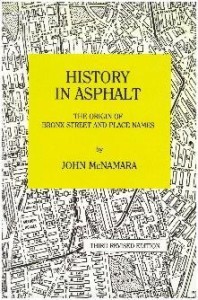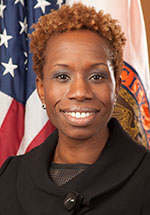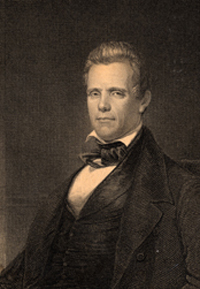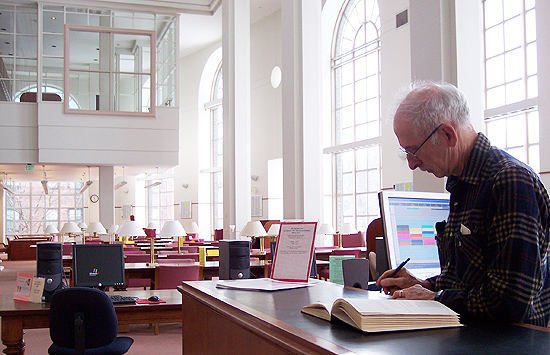My favorite book in the world is “History In Asphalt“, an encyclopedia of  Bronx street names written by the late John McNamara. (All apologies to Zadie Smith, Richard Russo and Jennifer Egan…) When you look at the Bronx around you, you see the Bronx around you. After spending time with this book, you can see the Bronx the way it is and the way it was.
Bronx street names written by the late John McNamara. (All apologies to Zadie Smith, Richard Russo and Jennifer Egan…) When you look at the Bronx around you, you see the Bronx around you. After spending time with this book, you can see the Bronx the way it is and the way it was.
(Buy it here from the Bronx Museum of The Arts.) (Shoutout to reader Miriam Tabb.)
Olinville Avenue
“This street is named after the settlements called Olinville No.1 and Olinville No.2 that were incorporated in 1852-1853. The townships were named in honor of Bishop Stephen Olin of the Methodist chuch.
From Gun Hill Road north to East 219th Street, it was once known as Pleasant Avenue.”–John McNamara
(A personal note: Why Olinville Avenue today? Well, the first one of these I did was Eastchester Road, which I’ve lived a few blocks from most of my life and “was born on” at the Weiler Hospital, and also, I was going to Valley Day 2014 (article here) which is the southern part of the Givan Estate located off of Eastchester (see photo in article on Eastchester Road). Before my parents moved near Eastchester Road, as a wee baby, we lived on Olinville Avenue, a street I’ve also had many a f riend and acquaintance make an address at some point in time. I realized later today, I would be covering a walkthrough of the Boston Secor NYCHA Development with Councilman Andy King (who grew up in Olinville–the No.1 and No.2 business has long been an anachronism) and NYCHA chair Shola Olatoye (pictured). Fun fact about yours truly and Chair Olatoye: we both went to a university in Connecticut presided over by Bishop Stephen Olin of the Methodist Church. Our university library was the Olin Library. I love local history because its a fun way to connect random people through random experiences and the past.)
riend and acquaintance make an address at some point in time. I realized later today, I would be covering a walkthrough of the Boston Secor NYCHA Development with Councilman Andy King (who grew up in Olinville–the No.1 and No.2 business has long been an anachronism) and NYCHA chair Shola Olatoye (pictured). Fun fact about yours truly and Chair Olatoye: we both went to a university in Connecticut presided over by Bishop Stephen Olin of the Methodist Church. Our university library was the Olin Library. I love local history because its a fun way to connect random people through random experiences and the past.)
STEPHEN OLINB.A., D.D., LL.D. “The overriding principle of collegiate studies is “their tendency to enlarge, invigorate and discipline the mind.“ |
 Although elected as the second president of Wesleyan University, Stephen Olin was actually the third president to serve in that capacity. Chronic ill health had beleaguered him throughout his life, and at the time he was elected president he felt that he was unable to serve and therefore postponed his presidency while he attempted to recover his strength in Europe.
Although elected as the second president of Wesleyan University, Stephen Olin was actually the third president to serve in that capacity. Chronic ill health had beleaguered him throughout his life, and at the time he was elected president he felt that he was unable to serve and therefore postponed his presidency while he attempted to recover his strength in Europe.

The Olin Library. Wesleyan University. Middletown, CT.
Born on March 2, 1797, in Leicester, Vermont, the son of a self-educated man who became a congressman and a judge in Vermont, Olin graduated from Middlebury College. At the age of 25, he had a religious awakening and gave up his study of law. He taught in South Carolina and then was a pastor for a short time before becoming a teacher and administrator. In 1832, he was elected president of Randolph-Macon College, declined the offer because of ill health, but then was re-elected and accepted the offer in 1834.
More than six feet tall, Olin had a commanding presence and was a charismatic speaker. When he arrived at Wesleyan in 1842, the university was in trouble. Discipline was poor and finances were in a dreadful state. Olin took charge, raised funds successfully, and put the university back on track. He consolidated the curriculum and despite this retrenchment, won the respect of the students.
During his tenure he continued to preach and debate, which also resulted in support for the university, both monetary and otherwise. However, this demanding schedule took a toll on his already-fragile health, and he died in Middletown on August 16, 1851. His son, Stephen Henry Olin, a loyal, active, and extremely influential alumnus, graduated from Wesleyan with the class of 1866. (-via Wesleyan University, Past Presidents)













Follow Us